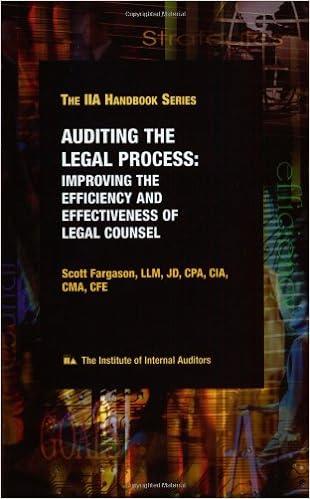Question
3. On July 31, 2018, Snowday Corporation issued $100,000, 5%, 20-year bonds for $88,443 when the market interest rate was 6%. The bonds pay semi-annual
3. On July 31, 2018, Snowday Corporation issued $100,000, 5%, 20-year bonds for $88,443 when the market interest rate was 6%. The bonds pay semi-annual interest on July 31 and January 31. Snowday uses the straight-line method to amortize its bond discount or premium, and it has a January 31 year-end. How much would interest expense from these bonds be recorded in Snowdays financial statements for the year ended January 31, 2019?
a. $2,500
b. $2,788.93
c. $5,577.85
d. $5,000
4. On January 1, 2019, Mohind Corp. issued a $120,000 six-year, 4% note payable. According to the terms of the note, the note is repayable annually, plus interest on the outstanding principle, due on the first day of each year. The payments will consist of an equal annual reduction of the principal. Mohinds year-end is on December 31. On Mohinds balance sheet dated December 31, 2019, how much of this note would be reported under the long-term liabilities section?
a. $120,000
b. $24,800
c. $100,000
d. $20,000
5. Ling Company has $500,000 in total assets, $200,000 in total liabilities and $300,000 in shareholders equity. Which of the following statement is incorrect?
a. All of the available choices
b. Current Ratio is 0.3 to 1
c. Debt-to-Equity Ratio is 0.67 to 1
d. Debt-to-Total-Assets Ratio is 0.4 to 1
6. If a bond was issued at a discount, on which date would the bonds carrying value be reported on the balance sheet as equal to the bonds face value?
a. On the date of bond issuance
b. On the date of the first interest payment
c. On the bonds maturity date before the principal was repaid
d. On the bonds maturity date after the principal was repaid
7. The anniversary date of a $100,000, 6% bond is June 30. Interest is payable twice per year. Entries related to interest are recorded each month. The entry to record the payment of interest on December 31 includes a:
a. Debit to interest payable of $2,500; debit to interest expense of $500; credit to cash of $3,000
b. Debit to interest payable of $3,000, credit to cash of $3,000
c. Debit to interest expense of $3,000, credit to cash of $3,000
d. Debit to interest expense of $2,500, credit to interest payable of $2,500
8. While bonds have a stated contractual interest rate (or coupon rate), notes can have one of two types of interest rate. These two types of interest rate are:
a. Fixed and Variable Interest Rate
b. None of the available choices
c. Stated and Effective Interest Rate
d. Short and Long-term Interest Rate
9. A $100,000 bond bears an interest rate of 6%. The bond was issued at a price of $95,000. The actual amount of interest that the investor would receive each year is:
a. $5,000
b. $5,700
c. $2,850
d. $6,000
Step by Step Solution
There are 3 Steps involved in it
Step: 1

Get Instant Access to Expert-Tailored Solutions
See step-by-step solutions with expert insights and AI powered tools for academic success
Step: 2

Step: 3

Ace Your Homework with AI
Get the answers you need in no time with our AI-driven, step-by-step assistance
Get Started


